Gentlemen’s Guide: Bangkok’s 5 Best Barber Shops
These top 5 barber shops in Bangkok are where gentlemen can elevate ...
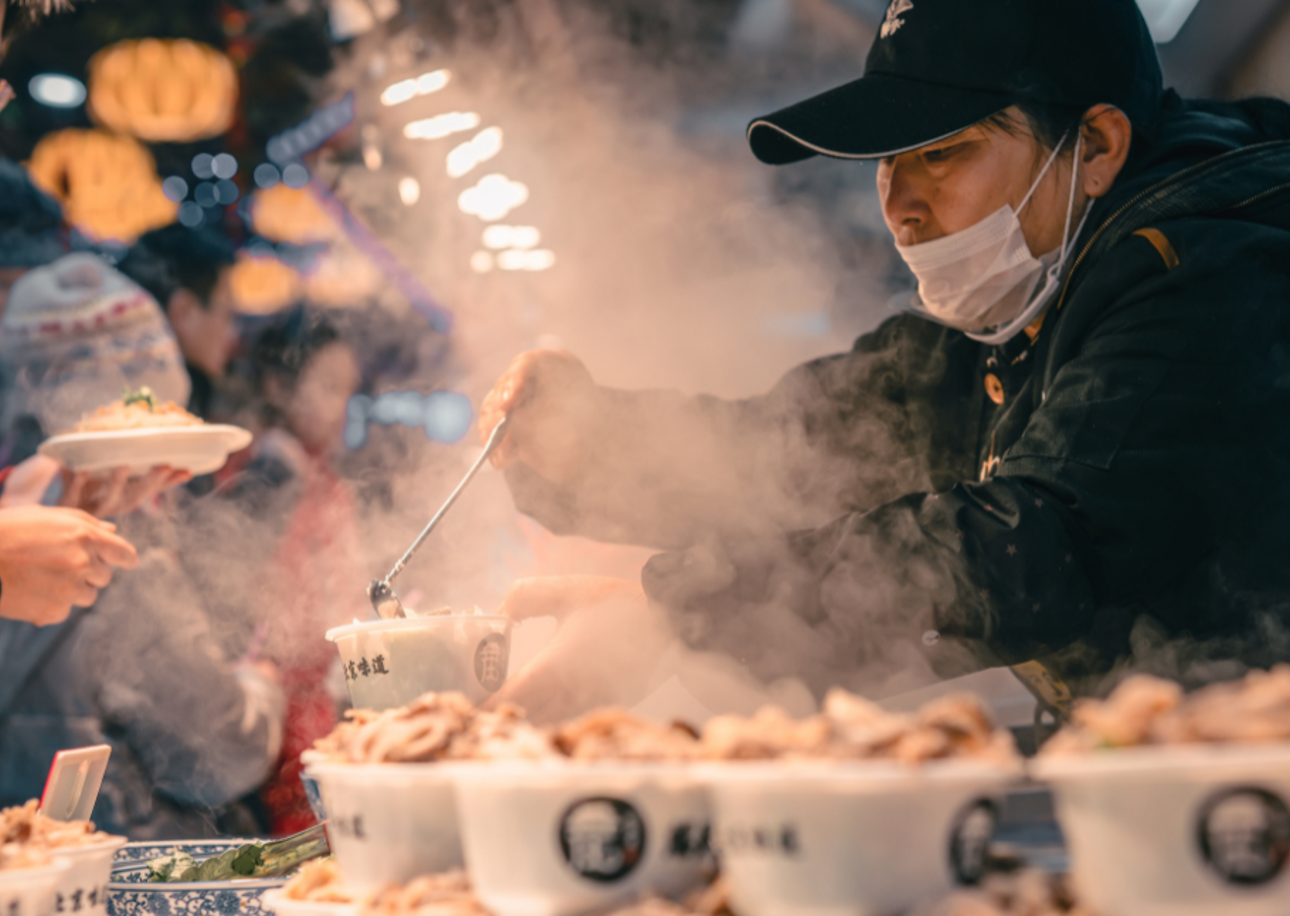
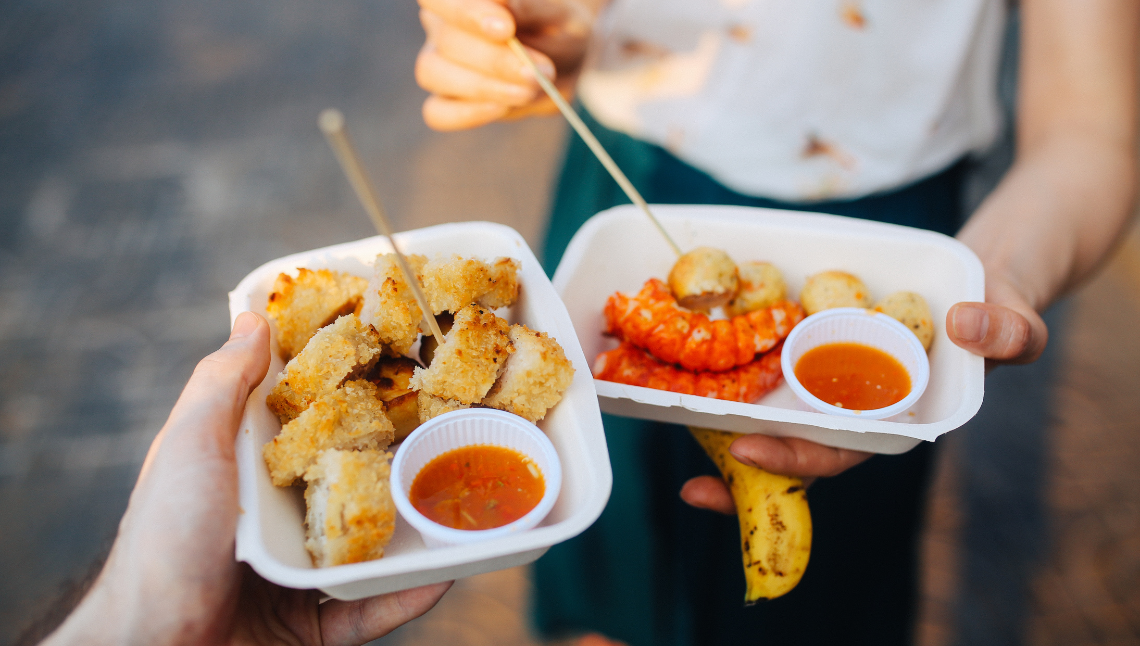
Street food is a cultural treasure, capturing the essence of a destination in a single bite. The culinary world is a tapestry woven with a multitude of flavours and experiences. Everyone knows that Thailand is one of the world’s top destinations for street food but apart from Thailand, there are many countries that make street food irresistible. From Bangkok’s Pad Thai to Brasília’s Pão de Queijo, uncover street food gems and explore the stories behind each dish as we delve into the rich tapestry of culinary traditions that shape vibrant street food scenes from 988 to 16,616 kilometres away from Thailand.
Pad Thai is a popular Thai stir-fried noodle dish that is enjoyed worldwide. It typically consists of rice noodles, eggs, tofu or shrimp, bean sprouts, peanuts, and a flavourful sauce. It is considered one of the national dishes of Thailand and has gained international popularity.
Pad Thai is believed to have been created in the 1930s or 1940s. During that time, Thailand was going through a period of nationalism, and the government sought to promote Thai identity and unity. It is believed that the dish was created by Plaek Phibunsongkhram, who was the Prime Minister of Thailand at the time. The intention was to create a dish that would use local ingredients and reflect the flavours of Thailand while also being affordable and accessible to the general population. Over the years, Pad Thai has evolved, and different variations and adaptations have emerged. Today, it is enjoyed not only in Thailand but also in Thai restaurants around the world. It has become a popular and well-loved dish due to its delicious flavours and versatility.
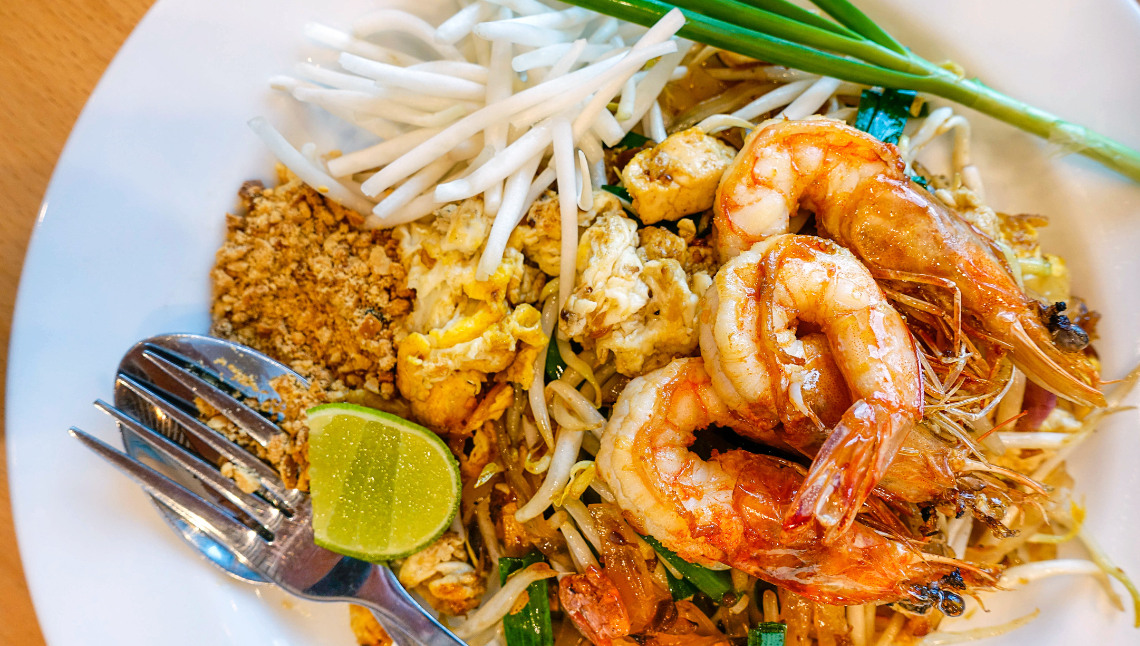
Pho is a popular Vietnamese noodle soup made with a flavourful broth, rice noodles, and various toppings such as bean sprouts, fresh herbs and sliced onions. The dish is often customised with additional condiments like hoisin and Sriracha sauces.
Pho’s origins can be traced back to the French colonial period in Vietnam, which lasted from the late 19th century until the mid-20th century. During this time, the French introduced beef to Vietnam, which led to the inclusion of beef in traditional Vietnamese dishes. Another theory points to the influence of the French dish “pot-au-feu,” a stew made with beef and vegetables. Vietnamese cooks may have adapted the concept of slow-cooking beef bones and combining them with rice noodles and aromatic spices to create pho. Influenced by French culinary traditions, pho combines indigenous ingredients and European influences, resulting in a complex and comforting flavour profile.
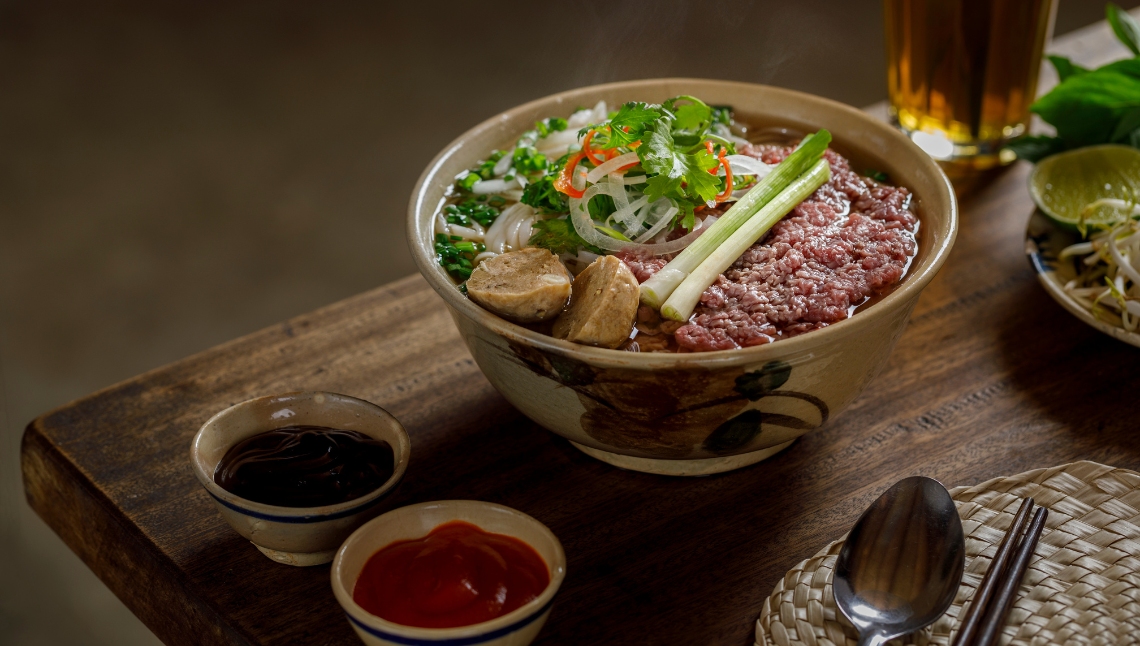
Chaat is a popular savoury snack that originated in India. It encompasses a range of dishes made with crispy fried dough, boiled potatoes, chickpeas, onions, yoghourt, chutneys, and spices. The word “chaat” itself is derived from the Hindi word “chaatna,” which means to lick or taste with relish.
Its history can be traced back to the royal kitchens of North India during the Mughal era. Chaat offers a diverse and flavourful experience, reflecting the rich culinary heritage of India. Over time, chaat has spread throughout India and gained popularity worldwide due to its unique blend of flavours and textures.
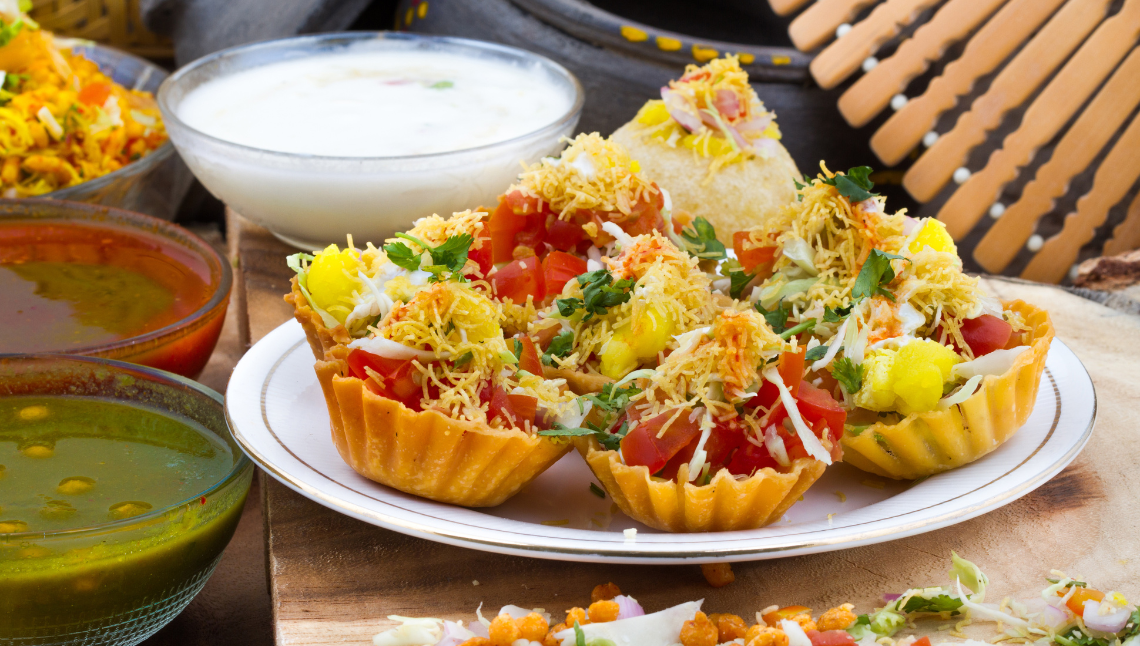
Takoyaki is a beloved street food in Japan. These round, savoury snacks are made from a wheat flour batter filled with diced octopus, green onions, and other ingredients. They are cooked in special pans and topped with sauce, mayonnaise, bonito flakes, and seaweed powder.
Takoyaki was first created in the 1930s by a street vendor named Tomekichi Endo. He started experimenting with a new dish using a special griddle that had half-sphere moulds. The idea was to create a snack that could be held and eaten easily while walking.
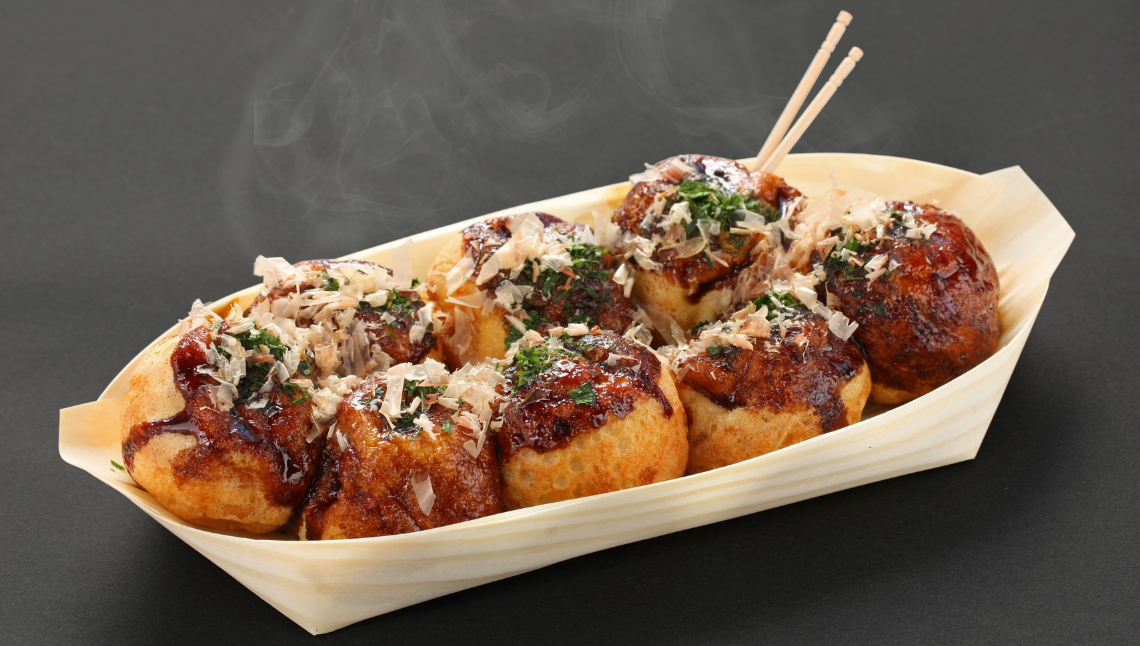
Döner kebab, one of Turkey’s most popular street foods, features thinly sliced meat roasted on a vertical spit. The meat is wrapped in a flatbread called dürüm, along with toppings and sauces. Döner kebab stands can be found throughout Turkey and are enjoyed by locals and visitors alike.
The origin of kebab is believed to trace back to the Middle East and Central Asia, with various regions having their own variations of this popular dish. The word “kebab” itself is derived from the Arabic word “kabāb,” which means “roasted meat.” One theory suggests that the concept of skewered meat dates back to ancient Persia (modern-day Iran), where soldiers would grill meat on their swords over open fires.
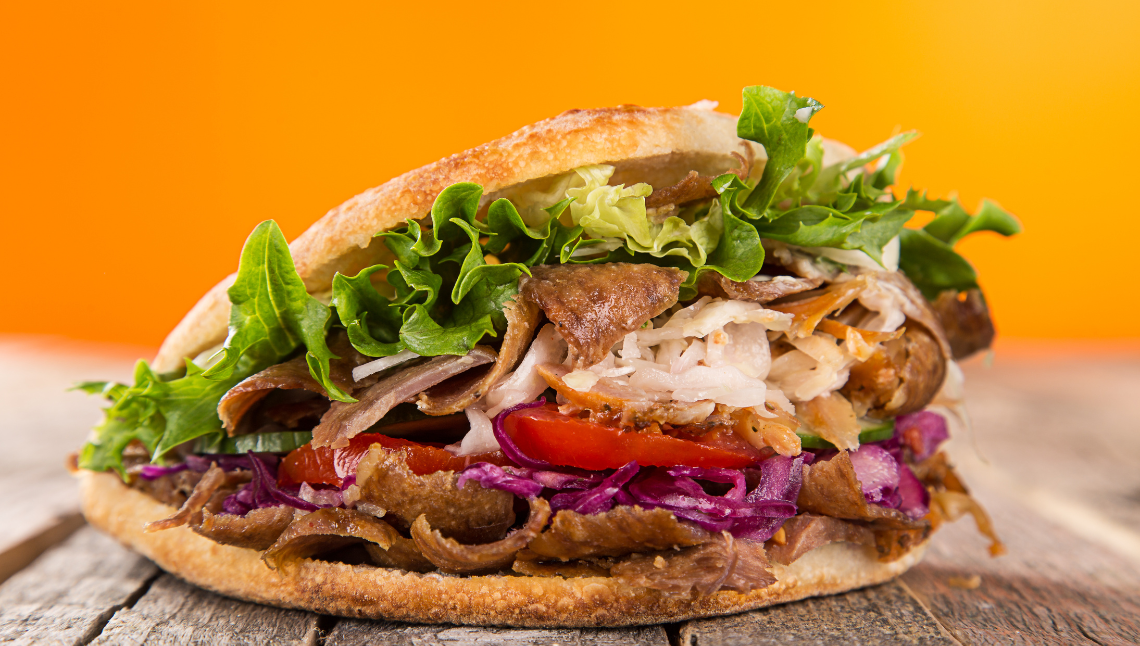
Tamales are a traditional Mexican dish made of masa, a dough typically made from corn, filled with various ingredients, and steamed or boiled. The process involves spreading the masa on corn husks or banana leaves, adding fillings such as meats, cheeses, vegetables, or chilli sauces, and folding before cooking. Tamales come in a variety of flavours and styles, depending on the region.
Their history can be traced back thousands of years to ancient civilizations like the Maya, Aztecs, and Olmecs. Tamales were consumed during feasts and religious ceremonies. With the arrival of the Spanish, new ingredients like pork, chicken, and spices were incorporated into traditional recipes, resulting in a fusion of flavours. Tamales spread throughout the region, becoming a popular dish in Mexico and Central America.
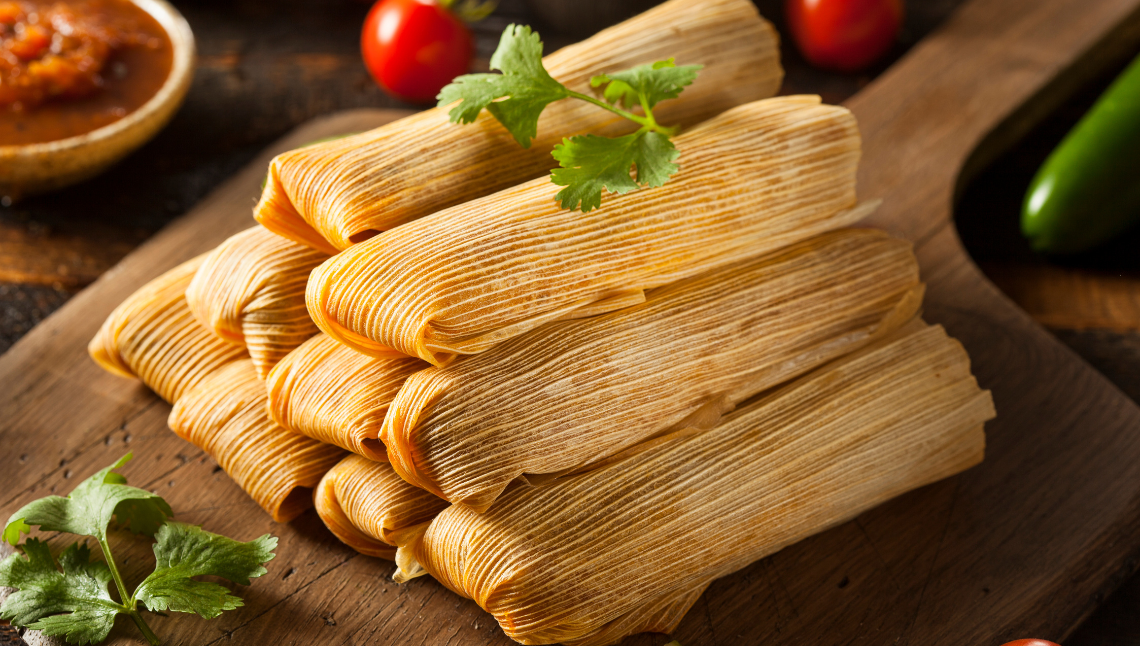
“Pão de queijo” (cheese bread), a traditional Brazilian snack, is made from a mixture of tapioca or cassava flour, cheese, eggs, milk, and oil. The dough is formed into small balls or rolls and baked until golden brown, with a slightly crispy exterior. The inside is soft, chewy, and filled with pockets of melted cheese, creating a unique texture and flavour.
Pão de queijo originated in Minas Gerais, Brazil, a state with a rich history. Slaves, who faced harsh conditions while working in the region, used limited resources like cassava flour and discarded cheese to create this bread. Over time, the recipe evolved to include tapioca flour and Parmesan cheese. Pão de queijo has become a beloved national favourite, symbolising the story of survival and resourcefulness in the face of adversity.
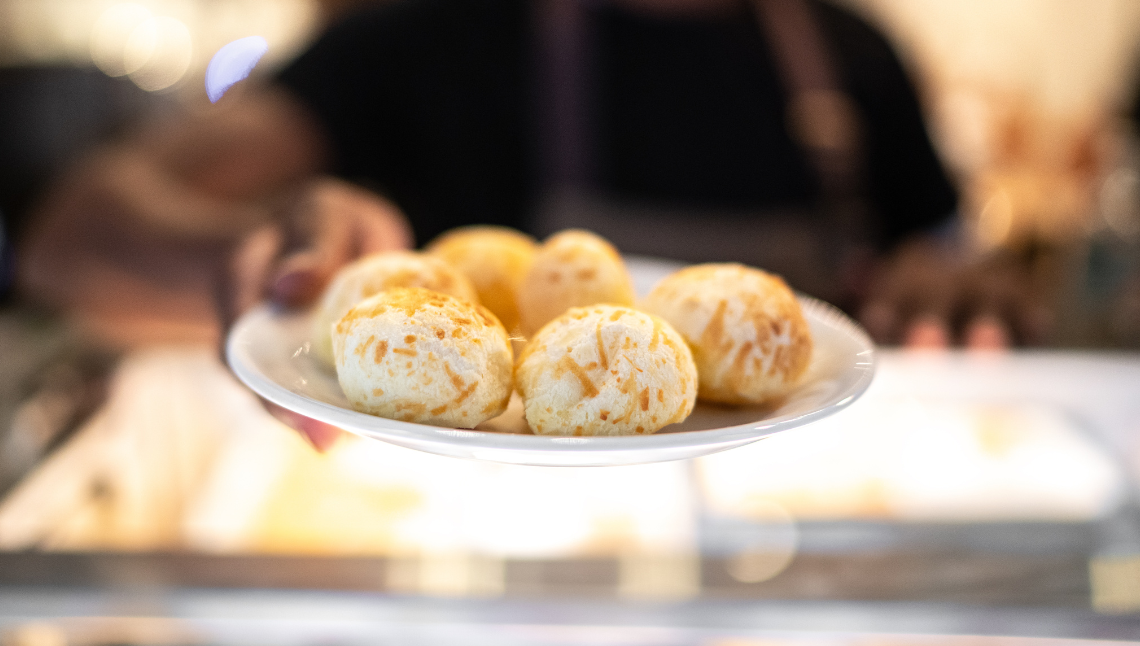
Street food goes beyond culinary delights; it is a cultural treasure that reveals the essence of a destination through its diverse flavours, aromas, and textures. From the fusion of flavours in Vietnam’s Pho to the regal heritage of India’s Chaat, and from Japan’s portable and savoury Takoyaki to the rich history of Turkey’s Döner Kebab, as well as the ancient roots of Mexico’s Tamales and Brazil’s story of survival with Pão de queijo, these street food gems offer a glimpse into the rich tapestry of each destination, allowing travellers to savour not only the flavours but also the stories that have shaped them.
These top 5 barber shops in Bangkok are where gentlemen can elevate ...
With a paintbrush in one hand and a whole world of identity ...
In a cinematic landscape saturated with remakes, reboots and sequels, you might ...
While traditional TV shows are serving us endless boy-meets-girl tales. Thailand has ...
Must-have gadgets for kids in the Y2K are, predictably, making a comeback ...
Get an exclusive peek into the world of Freen Sarocha: uncover 10 facts ...
Wee use cookies to deliver your best experience on our website. By using our website, you consent to our cookies in accordance with our cookies policy and privacy policy